In my requirement currently,I wanted to develop a Pintrest layout view. For that I have 2 tableView's on same ScrollView.
mark: I didn't use collectionView as it was very difficult to customize the flow Layout for this purpose & I do not want to include a 3rd Party framework for the same.
Check the attached screenshot -
I am populating them with 2 arrays one for even & one for odd items. I am making these tableView's non scrollable & increasing my scrollView's contentView's height as per the tallest tableView. Both the tableView's have custom cells with dynamically increasing contents i.e a label.
in my viewDidLoad()
self.tableViewCol1.estimatedRowHeight = 296
self.tableViewCol1.rowHeight = UITableViewAutomaticDimension
self.tableViewCol1.separatorStyle = UITableViewCellSeparatorStyle.None
self.tableViewCol2.estimatedRowHeight = 296
self.tableViewCol2.rowHeight = UITableViewAutomaticDimension
self.tableViewCol2.separatorStyle = UITableViewCellSeparatorStyle.None
in my DataSource method -
func tableView(tableView: UITableView, cellForRowAtIndexPath indexPath: NSIndexPath) -> UITableViewCell
{
var cell2 = MostLikedTVCscnd()//custom Cell for 2nd Table
var cell1 = MostLikedTVC()//custom Cell for 1st Table
if tableView == tableViewCol1
{
let cell = tableViewCol1.dequeueReusableCellWithIdentifier("cell1", forIndexPath: indexPath) as! MostLikedTVC
cell.imageCol1.image = imageArr1[indexPath.row] as? UIImage
cell.aboutLblCol1.text = labelArr1[indexPath.row] as? String//dynamic increasing label
cell1=cell
}
else if tableView == tableViewCol2
{
let cell = tableViewCol2.dequeueReusableCellWithIdentifier("cell2", forIndexPath: indexPath) as! MostLikedTVCscnd
cell.imageCol2.image = imageArr2[indexPath.row] as? UIImage
cell.aboutLblCol2.text = labelArr2[indexPath.row] as? String
cell2 = cell
}
//changing the height constraint of table's to make the table view non scrollable
tableView1HghtCnstrnt.constant = tableViewCol1.contentSize.height
tableView2HghtCnstrnt.constant = tableViewCol2.contentSize.height
//comparing the content size of table's to check which table is the tallest & adjust the height of the main ScrollView's content
if tableViewCol1.contentSize.height>tableViewCol2.contentSize.height
{
mainViewHghtCnstrnt.constant = tableViewCol1.contentSize.height+35//mainViewHghtCnstrnt :- mainScrollView's content height constraint & 35 is the padding
}
else if tableViewCol1.contentSize.height<tableViewCol2.contentSize.height
{
mainViewHghtCnstrnt.constant = tableViewCol2.contentSize.height+35
}
else if tableViewCol1.contentSize.height==tableViewCol2.contentSize.height
{
mainViewHghtCnstrnt.constant = tableViewCol2.contentSize.height+35
}
//returning the cell
if tableView == tableViewCol1
{
return cell1
}
else
{
return cell2
}
}
}
But my problem is that the table's are not properly calculating the size of their content's. I did some search and here an answer to a question says - contentSize will be messed up when you give estimatedRowHeight
So what options do I have? What can be done to realise the same properly?

